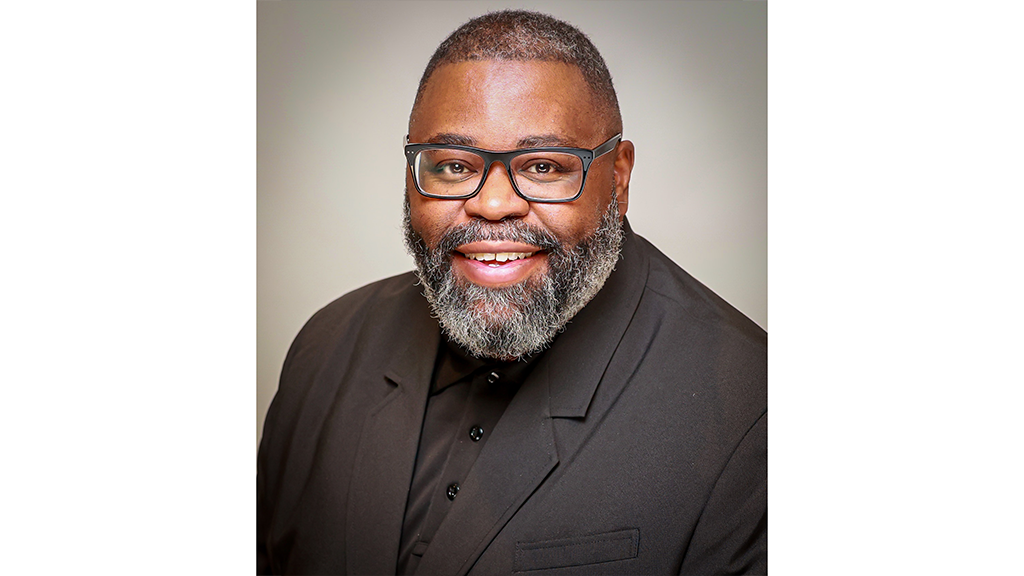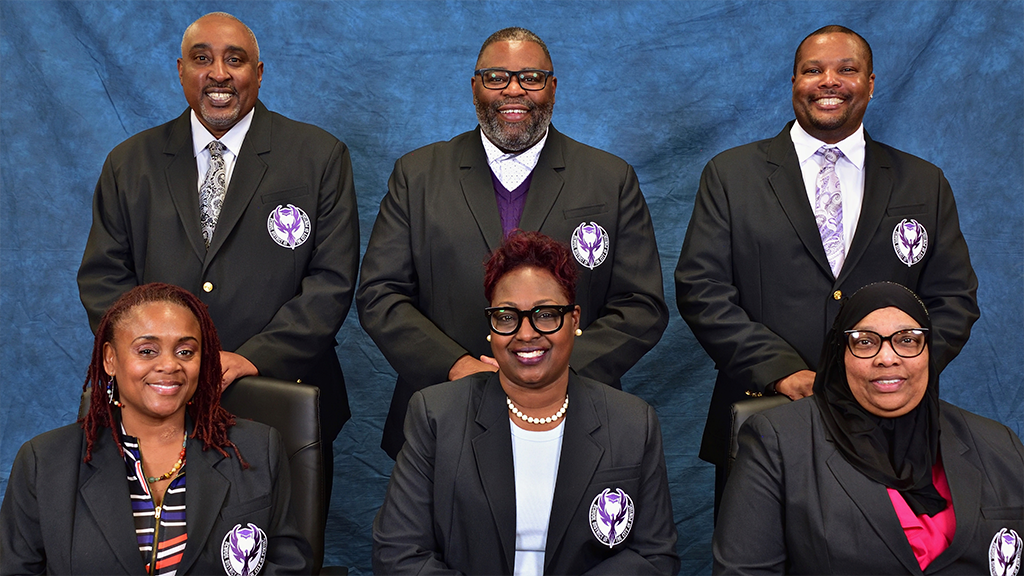
CUBE Steering Committe Chair Gill Garrett
As a former school resource officer, Gill Garrett gained a unique perspective on the challenges facing many urban school districts. That view expanded with Garrett’s current position as a community policing officer with Michigan’s Oakland County Sheriff’s Office, serving as board president for Centro Multicultural La Familia, a nonprofit providing a range of health and support services to the Oakland region’s growing Latino and Hispanic communities, and as the board of education president for Michigan’s Pontiac School District.
He’s seen how the odds are stacked against students when schools and communities fail to provide young people with resources, opportunities, and exposure to as much information as possible for them to make sound decisions and reach their goals, Garrett says. When students don’t get those tools, they are at increased risk for negative, possibly long-term interactions with the criminal justice system and, with it, “a loss of hope and belief in their future,” he adds.
That awareness convinced Garrett of the importance of having “a seat at the decision-making table” for his local school district.
Now, as the new steering committee chair of NSBA’s Council of Urban Boards of Education (CUBE), Garrett is committed to the organization’s work of aiding urban school board leaders in acquiring the skills and knowledge necessary to serve as effective policymakers and advocates for educational equity.
For more than 50 years, CUBE has brought together and given voice to school boards that represent our nation’s historically underrepresented and underserved students, allowing them to “take best practice ideas and implement them,” Garrett says. “To really do the work.”
The importance of CUBE’s work is only growing as the nation’s demographics shift, and the challenges traditionally experienced by urban school districts are increasingly reflected in many rural and suburban school districts, he notes.
The CUBE Steering Committee is comprised of 14 school board members elected by representatives of the school districts participating in the CUBE program. NSBA’s president and executive director serve as ex officio members.
Garrett’s involvement with CUBE began in 2007 when he was first elected to the Pontiac School District board of trustees. Originally from nearby Detroit, he says, “I always say Detroit raised me; Pontiac groomed me.”

Board President Gill Garrett and members of the Pontiac School District Board of Trustees. (Missing from photo: Trustee Troy Craft)
After his 2007-2011 term expired, he opted to take a break from board service but was re-elected in 2020. The husband and father of four and grandfather of four also serves on the board of directors of the Michigan Association of School Boards. As CUBE chair, he serves as an ex officio voting director on the NSBA board of directors.
One aspect of school board leadership he wishes he had known better as a rookie trustee is that “education is a business.” Says Garrett, “We often tell new board members, ‘If you love children, and you want to do right by kids, come on the school board.’” What’s omitted, however, are the financial issues involved, such as “decisions about raises, understanding unions and how they participate in the educational system, costs associated with upgrading facilities, and understanding capital outlay projects,” he says.
Those issues and more hit home for Garrett and his Pontiac School District board colleagues as they worked diligently over the past decade to turn a $56 million debt into, at present, a $13 million surplus for the approximately 4,000-student district. In 2010, a forensic audit commissioned by the board documented financial improprieties and mismanagement. Between 2013 and 2018, the district operated under a Consent Agreement with the state to address what was deemed a financial emergency. The agreement set in motion a collaborative effort to restore fiscal accountability while ensuring that the district would provide a quality education to its students.
In 2020, two years after the consent agreement ended, Pontiac voters expressed renewed trust in the steps taken by district leadership when they approved a $147 million bond proposal. The amount didn’t cover all the district’s deferred needs, Garrett says, but it was enough “to make sure that we could build foundationally some solid schools that our kids can be proud of.”
Among projects completed or still underway: upgraded electrical and internet infrastructure to support a surge in new technology needs and equipment; two state-of-the-art science labs; two new theaters; a renovated high school gymnasium and football field. “We did some feel-good projects, but we also did some structural projects,” Garrett says.
The district also is working to enhance its curriculum and continue to increase graduation rates. It has expanded career and technical education pathways in business and finance, information technology, manufacturing engineering, and health care, and begun introducing the pathways at the middle school level. The Pontiac School District received an Honorable Mention in NSBA’s 2023 Magna Awards for its Career Pathway initiative.
Opportunities for dual enrollment, allowing students to receive college and high school credit simultaneously, are also growing. Students in the district’s International Technology Academy were recently recognized for their superior performance in the National Education Equity Lab. The program provides college-credit-bearing classes from some of the nation’s top colleges to students in historically marginalized communities at no cost to students. Among Pontiac School District students, 80% are identified as economically disadvantaged; 53% are African American; 37% are Hispanic or Latino.
At the start of the COVID-19 pandemic, the Pontiac district, like many others, rushed to get laptops and hotspots into the hands of students to enable virtual teaching and learning. This year, via a federal Emergency Connectivity Fund grant, it began expanding on that effort by providing each student with both an in-school device and an at-home device, eliminating the need to carry laptops back and forth.
Next year, students will benefit from the addition of 25 environmentally friendly electric buses, purchased with a $9 million grant from the Environmental Protection Agency. A separate grant was awarded to provide charging stations for district vehicles and for public usage. The board pursued the grants both as an investment in the health of the community and the environment but also as an investment in students’ education, Garrett says.
Located just 25 miles northwest of Detroit, Pontiac sits in the “engineering hub of Oakland County,” he notes. “With one of our 16 CTE pathways focused on that area between electrical and mechanical, where kids are learning to repair or even come up with their own (electric vehicle) ideas, it’s good for our students to actually experience them.”
The district is exposing students to its green mindset via two 10-seat electric passenger vans used primarily to transport smaller teams to events.
Given its focus on financial, structural, and educational renewal, it’s appropriate that the Pontiac School District’s mascot is a phoenix, the mythical bird synonymous with rebirth and soaring to great heights. Growing an extensive network of more than 25 community partners, including Oakland University, General Motors, Amazon, Communities in Schools, and the Pontiac Ministerial Alliance, to name just a few, has been instrumental in supporting district students with academic and enrichment programs.
Through a new partnership with Davenport University to address the teacher shortage, 75 scholarships toward urban education degrees or certificates will be offered to current students, staff, and parents within the school district.
Pontiac’s positive trajectory couldn’t take off until the school board could show “proficiency and effectively govern,” says Garrett. “That’s when things started turning around.”

Garrett poses with members of the Oakland County, Michigan, Chapter of The Links, a national volunteer service organization and district partner. The group sponsored a holiday party for Pontiac Middle School.
Part of that transition also required changing the board’s relationship with Superintendent Kelley Williams, he adds. Selected for the position in 2013, Williams has more than 20 years of service to the school system. Along with an emphasis on allowing her to “really build the curriculum and develop her team” while the board focuses on policies and procedures, it was a matter of seeing Williams as “a team member and not just an employee. It became a board of eight instead of a board of seven,” Garrett says. “And that unity is shown throughout the district.”
Continuing to share the journey, resources, and opportunities that school boards in urban districts can use to close opportunity gaps that hinder students—our next generation of leaders—is a charge that Garrett is eager to assume as CUBE chair: “I’m super excited about this opportunity. Too often, we don’t think there’s a support network out there for us to do this work, and there really is.”
PHOTOS COURTESY OF THE PONTIAC SCHOOL DISTRICT
Michelle Healy is associate editor of American School Board Journal.

Share this content